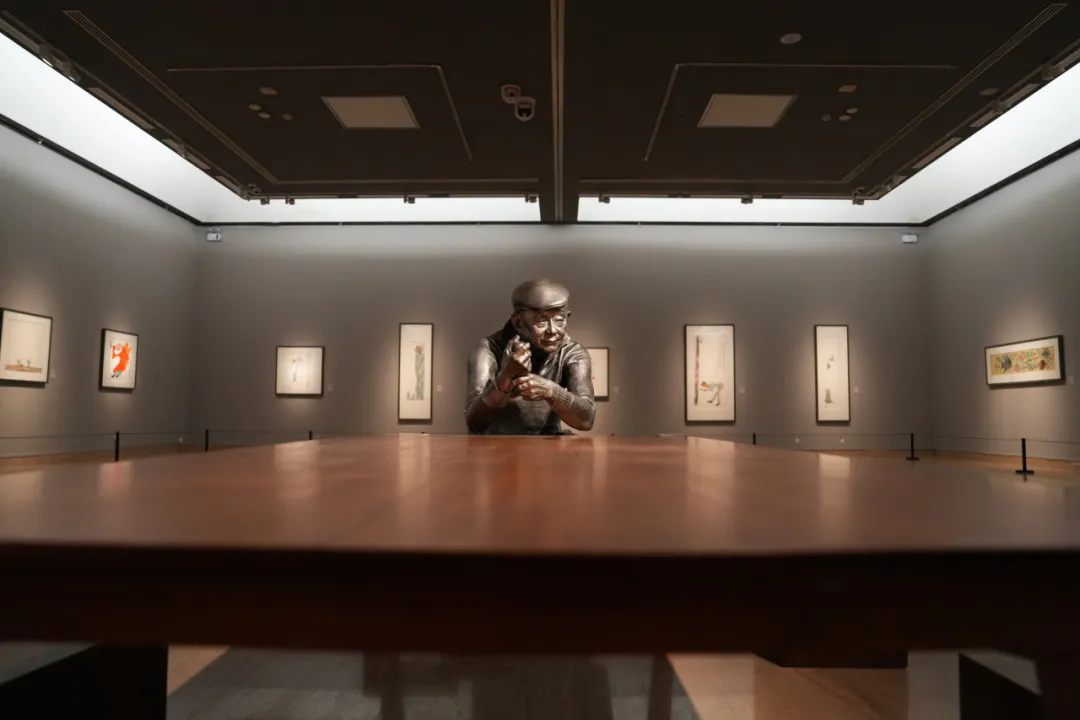 Exhibition View of “So Long, and Colorful”
Exhibition View of “So Long, and Colorful”
In “Landscapes Under the Sun—Shen Congwen and Me”, an article that Huang Yongyu wrote on 31 December, 1979, he recalled his memories about his uncle Shen Congwen (1902-1988) and he commended: “What a long life (Shen) lived, and (his experience were) so rich, and colorful.”

Huang Yongyu in His Late Years (Photo by Bimuyu)
Like Shen’s life and career experience of being a renowned writer and scholar, Huang Yongyu (1924-2023) is also one of the most prolific artists and a prominent and leading figure in art and culture. “So Long, and Colorful” has become the title of Huang’s recent exhibition featuring his latest works held at the National Art Museum of China. It showcased nearly 160 ink paintings, all of which were created after he turned 90 years old. Rather than a retrospective, it was themed on his “l(fā)atest works” which he had planned for a while. “None of the paintings in the show will have been seen before in art and cultural circles,” he once said. “I’m pretty serious about making it happen.”
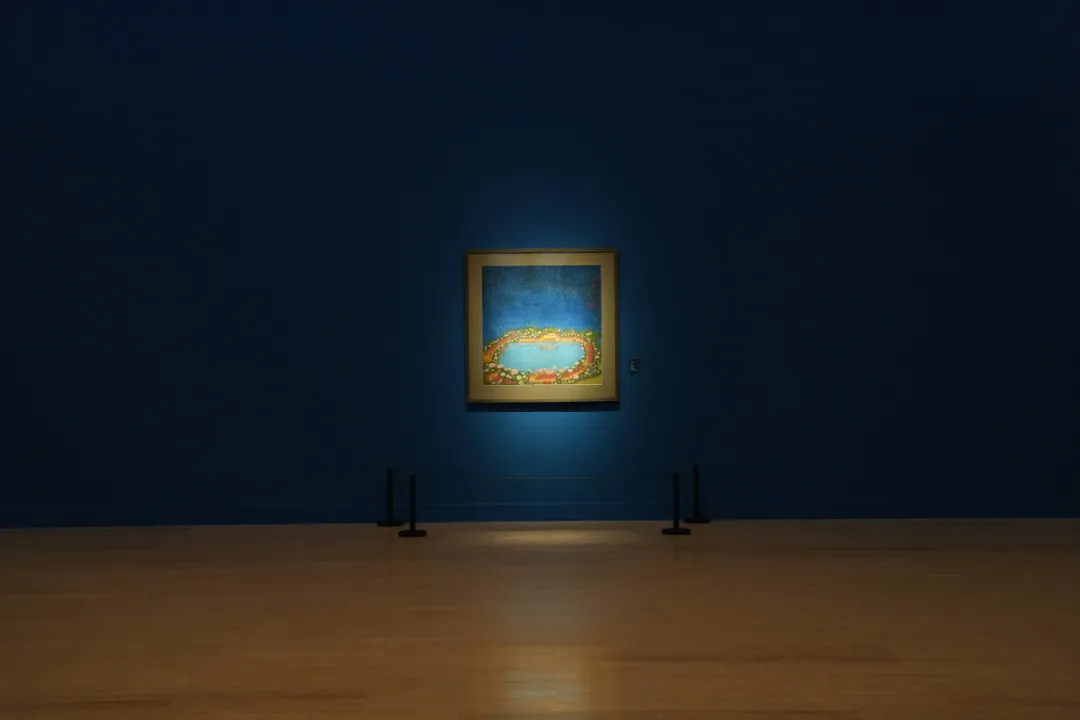
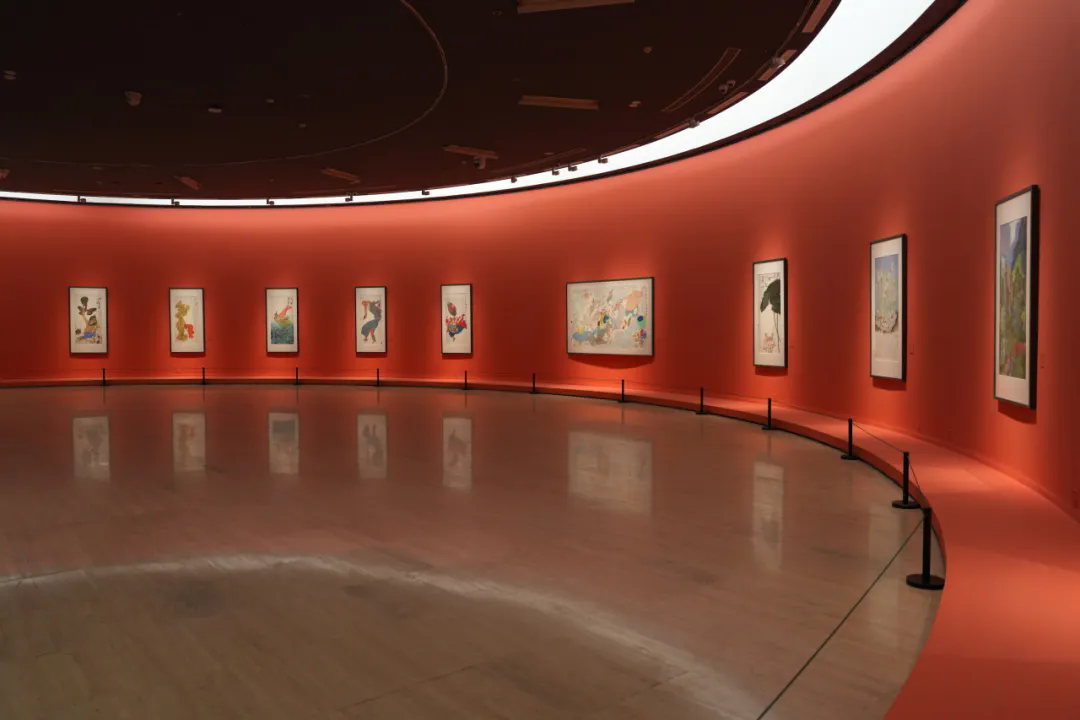
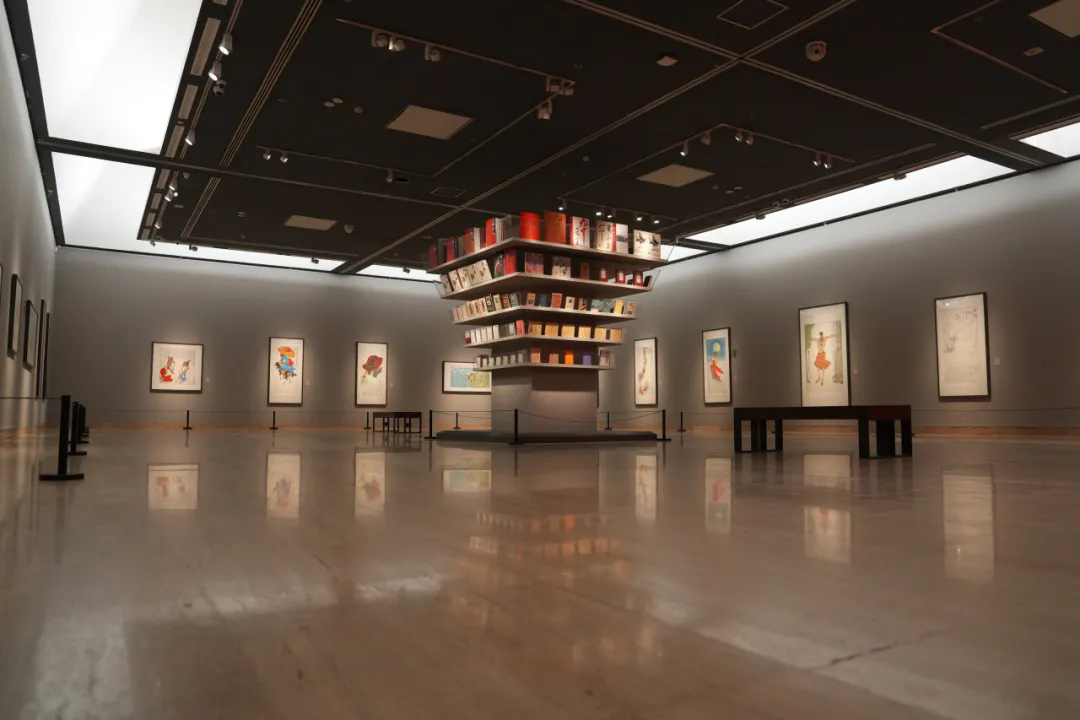
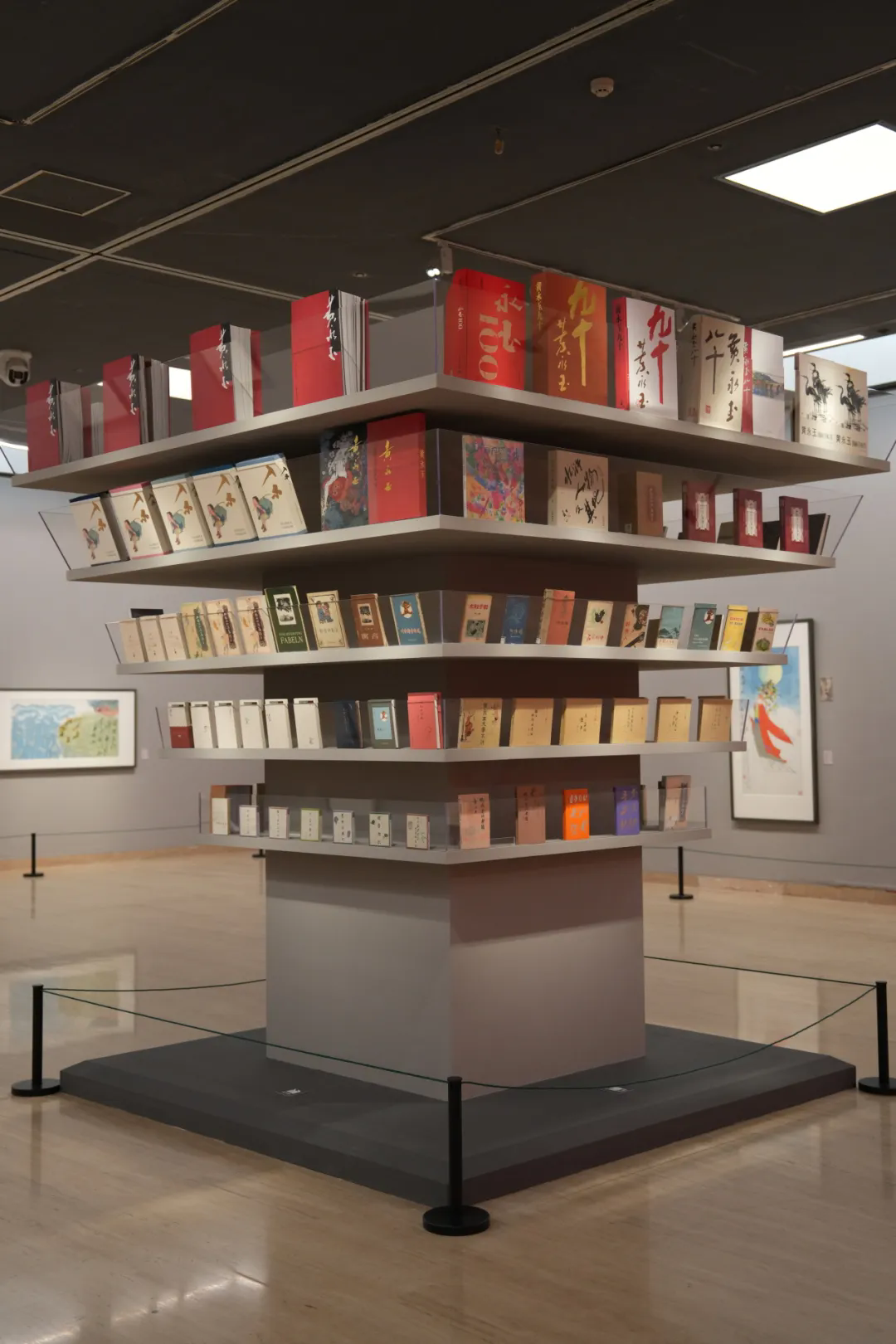
Exhibition View of “So Long, and Colorful”
The earliest painting on show was finished in 2015, while the latest was completed a few weeks before his death, all of which demonstrating Huang’s lifelong passion for art, and as well as his willing to share his pleasure with the public.



View of the Opening Ceremony
According to Shao Dazhen, critic and professor at the Central Academy of Fine Arts, where Huang taught for decades, his art and writing reflects “the realities of the world, in a straightforward manner, with no pretense.”
“He loved people and he loved life deeply, but he expressed this in a peaceful way. He spoke for the public, when he painted and wrote,” Shao said. “His work is sincere, interesting and appealing. It is unparalleled.”1
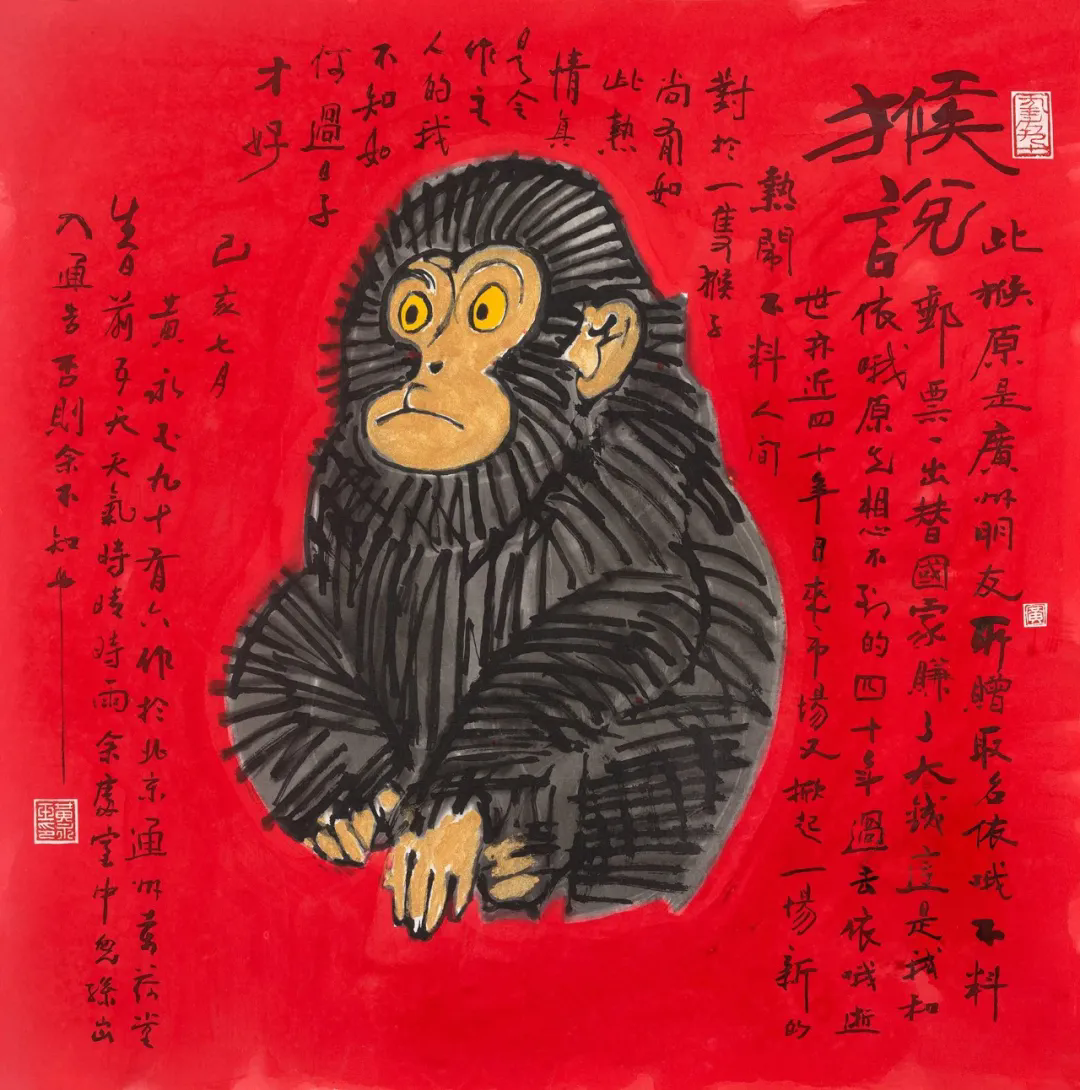
Monkey Said, 68.5×68.5cm, 2019 The Monthly Calendar in Year of the Ox-3, 46cm×50cm, 2021
The Monthly Calendar in Year of the Ox-3, 46cm×50cm, 2021 In January of Last Year, 136.5cm×69.5cm, 2017
In January of Last Year, 136.5cm×69.5cm, 2017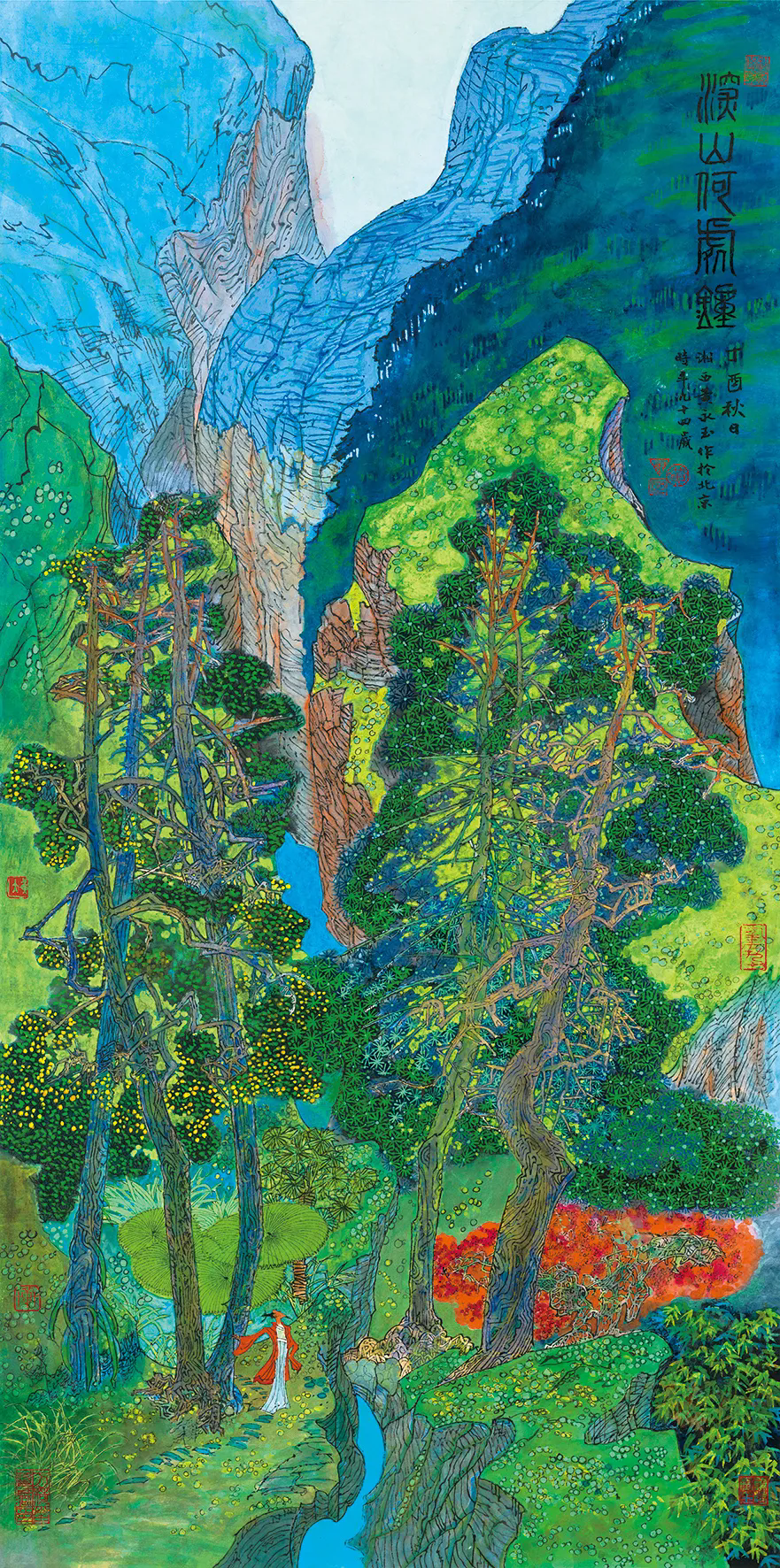 In Moutains, 137.5cm×69cm, 2017
In Moutains, 137.5cm×69cm, 2017
Wu Hongliang, Director of the Beijing Fine Art Academy, praised that Huang saw “a miniature universe” in the small lives around him, and celebrated them in his work, though he was physically confined to his home and studio in his late years of life.
“One feels the various dimensions he used to understand the world, which were not only based on an accumulation of knowledge, observation and experience,” said Wu, “Huang drew the scene and related it to how one makes judgments in life. He always worked hard to enrich his knowledge of the world.”2

Recalling Worldly Affairs before Having Gone Through Thousands of Miles, 178.5×95.5cm , 2021

Hosta Flowers, 127x121.5cm, 2022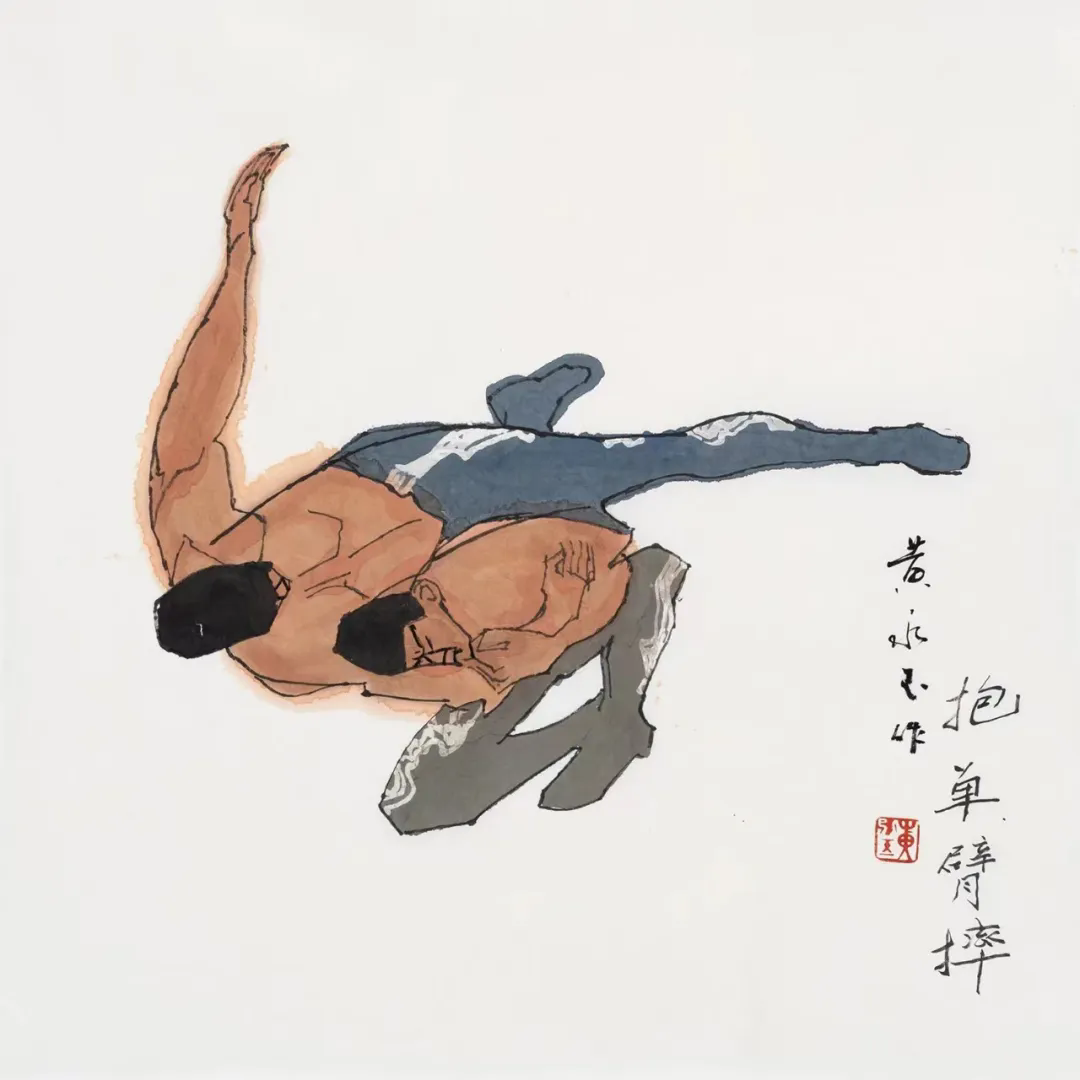 Wrestling by Grasping One Arm, 69×69cm, 2017
Wrestling by Grasping One Arm, 69×69cm, 2017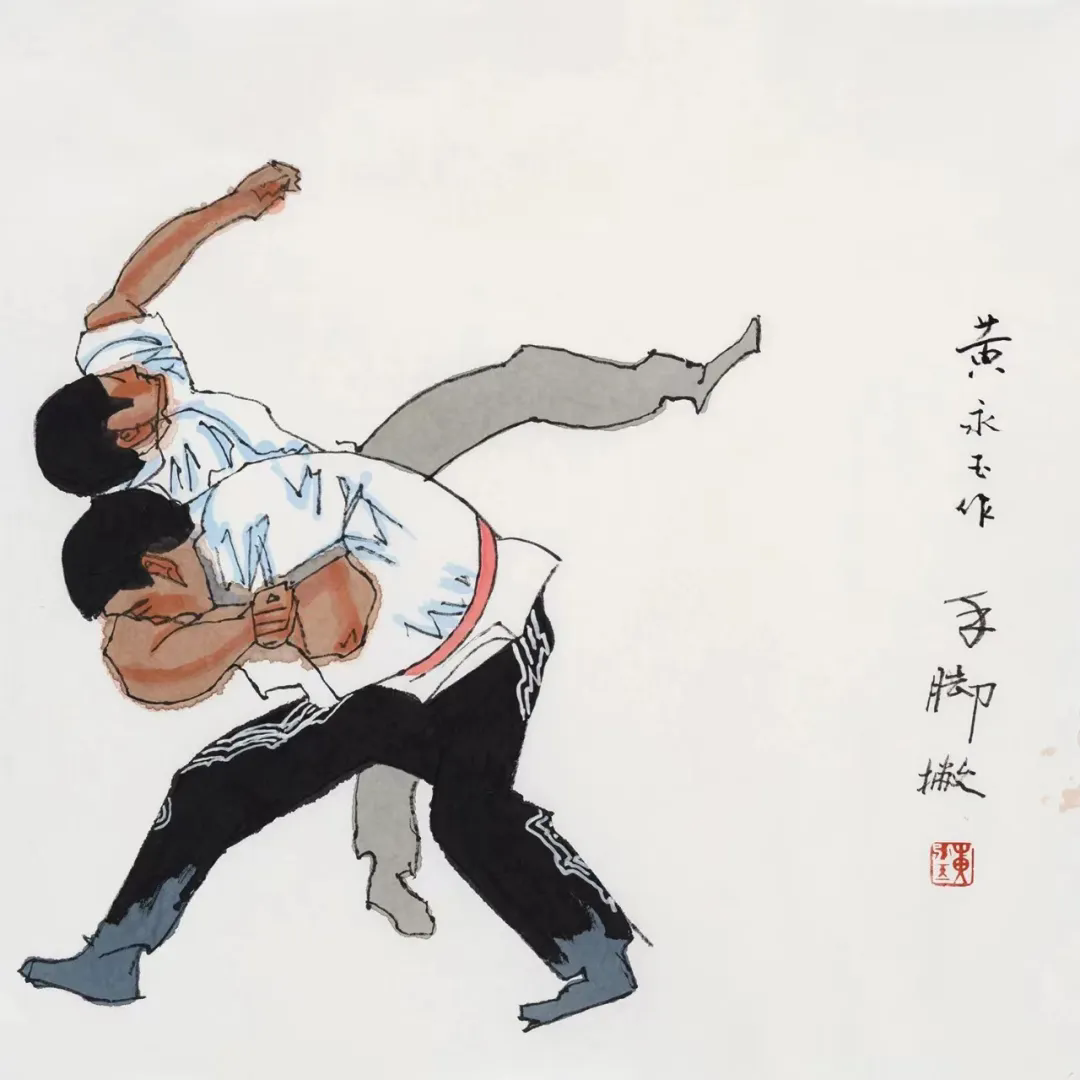 Wrestling by Flinging Hands and Feet, 69×69cm, 2017
Wrestling by Flinging Hands and Feet, 69×69cm, 2017 The sun rises over the East China Sea and the moon shines on Dongting Lake, 69x70.5cm, 2022
The sun rises over the East China Sea and the moon shines on Dongting Lake, 69x70.5cm, 2022
Also, Huang reinforced that tradition of inscription by extending the length of his commentaries on paintings, which are often of hundreds of characters in length, enough for an essay. By reading his works carefully, we cannot only understand the stories behind them, but also behold a centenarian’s memories of youth, his love for life and his insights. Huang’s painting and writing are full of the wit and humor for life, integrated with his down-to-earth manner and calmness that jointly constitute such an interesting exhibition.

Random thoughts of Master Li Shizhen, 179cm×97cm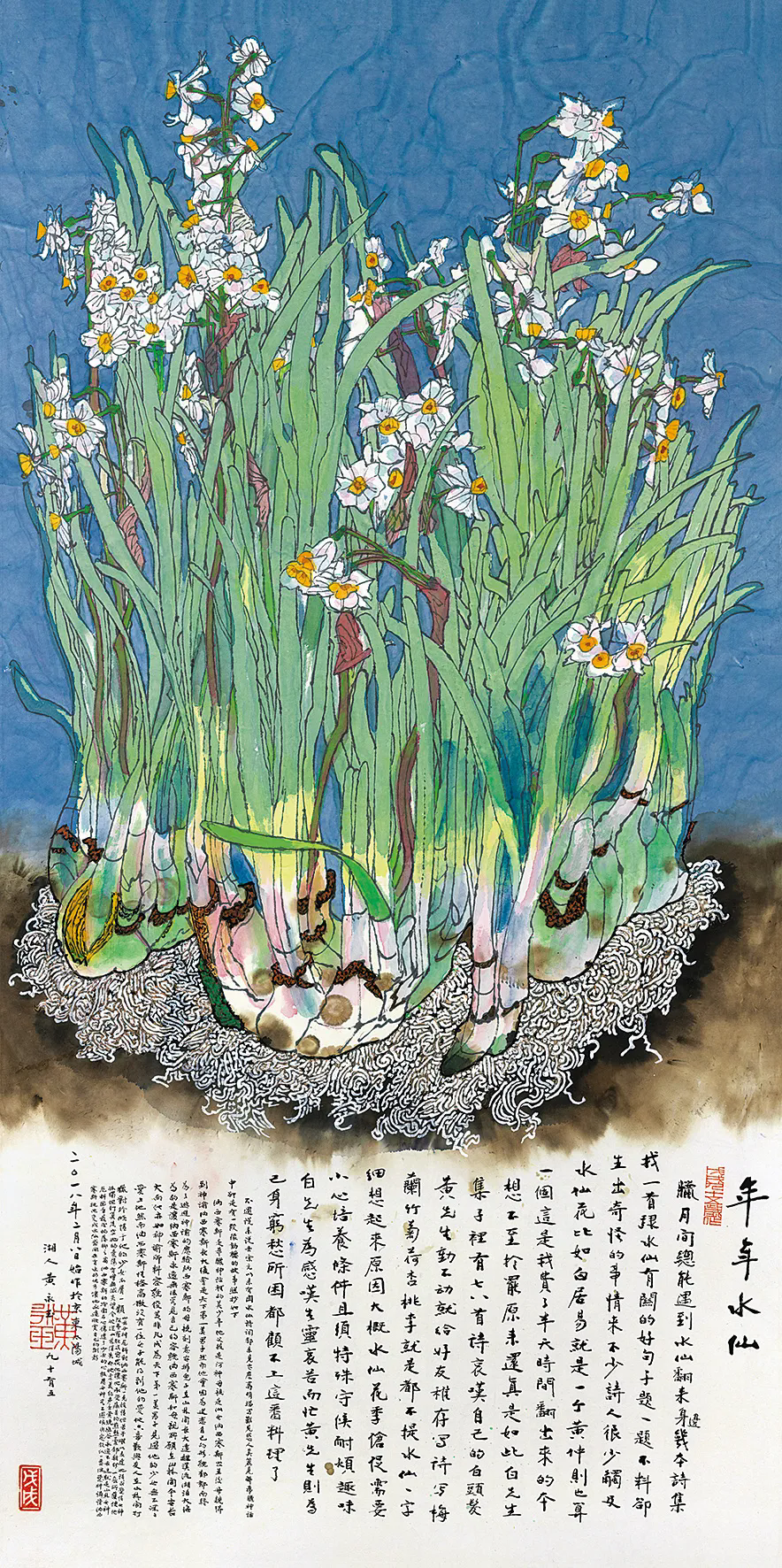 Narcissus blossoms every year, 137.5cmx68.5cm, 2018
Narcissus blossoms every year, 137.5cmx68.5cm, 2018 Lobster Marriage, 178.cm×96.5cm, 2021
Lobster Marriage, 178.cm×96.5cm, 2021 The Painting About What Song Yuanjun Wanted to Draw, 143.5×243.5cm, 2020
The Painting About What Song Yuanjun Wanted to Draw, 143.5×243.5cm, 2020
“Beauty, fades easily, but the mission of art is to retain it.” Therefore, Huang Yongyu took use of such a wide range of materials, such steady brushwork, and interesting inscriptions to present us with his unique sense of beauty. Meanwhile, it also brought together such a colorful character of Huang Yongyu that pleases both the eyes and minds of the audience.

The Monthly Calendar in Year of the Rabbit-3, 48cm×45cm, 2022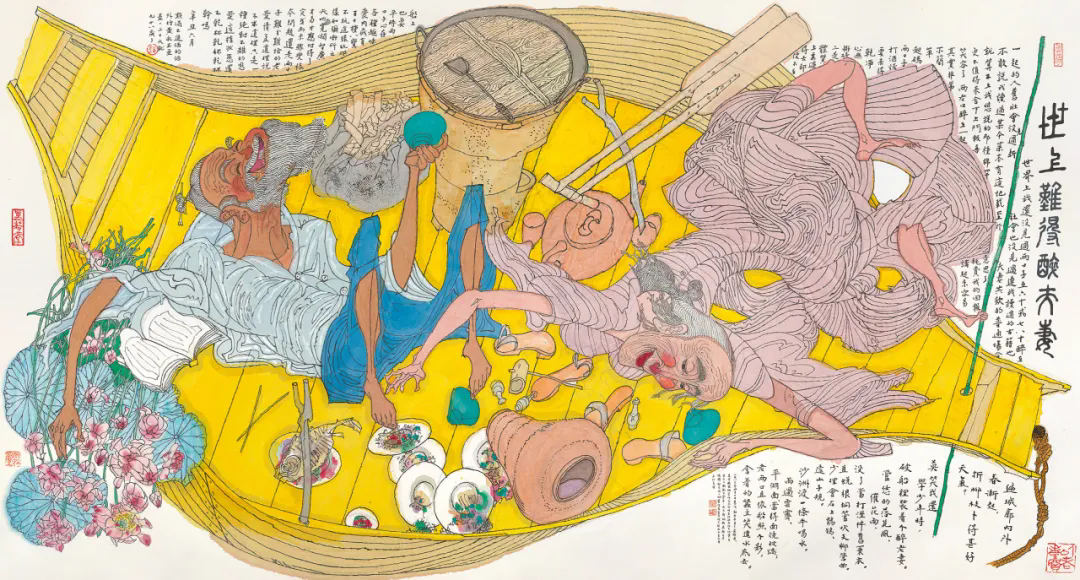 A drunk couple is bliss in the world, 96.5cm×179cm, 2021
A drunk couple is bliss in the world, 96.5cm×179cm, 2021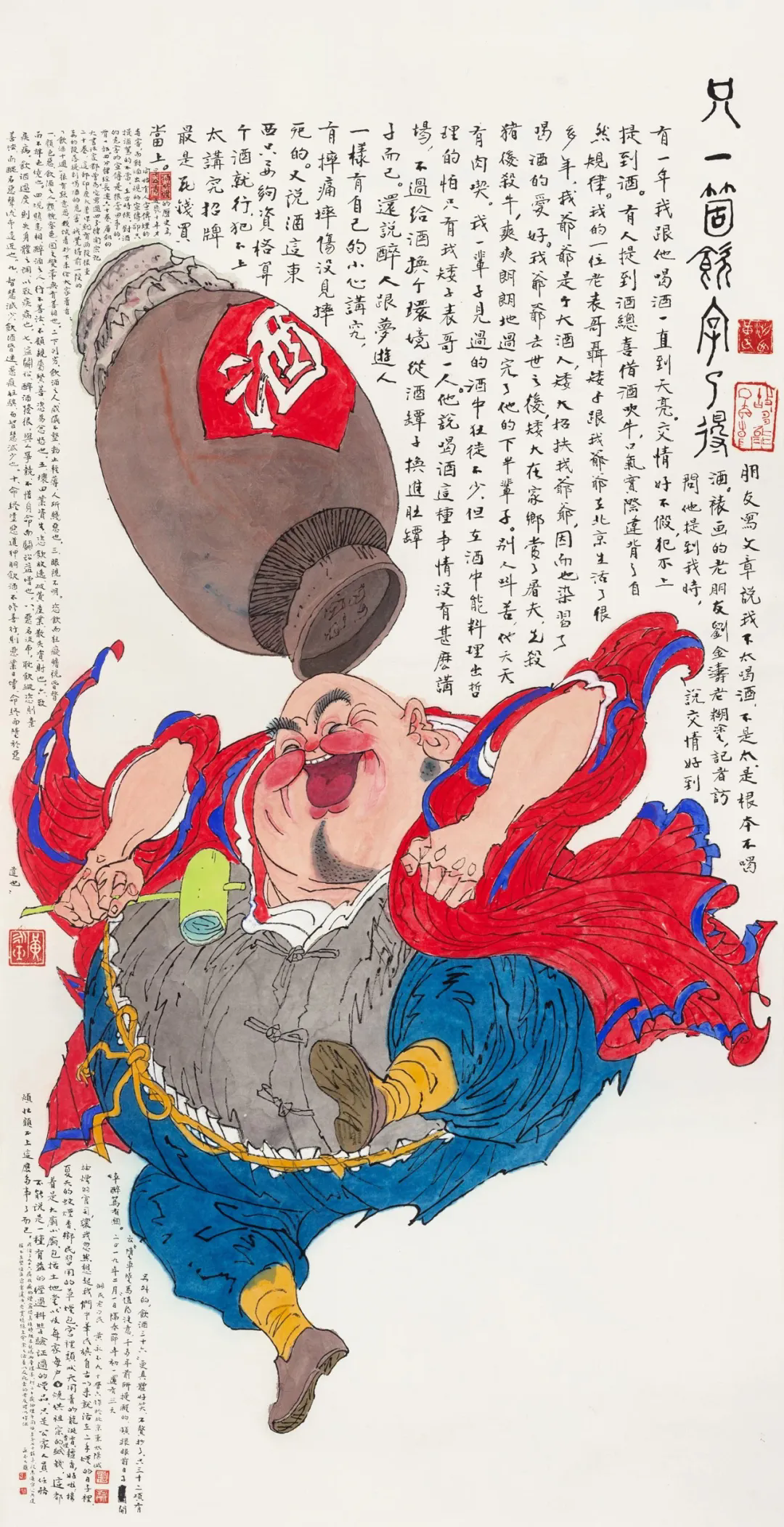 Only the word "drink" is enough, 135×68.5cm, 2019
Only the word "drink" is enough, 135×68.5cm, 2019
Notes:
1, 2. Quoted from Creating of an eternal audience, http://www.china.org.cn/arts/2024-07/09/content_117298304.htm.
Courtesy of the National Art Museum of China, edited by CAFA ART INFO.
Image Courtesy of Bimuyu.
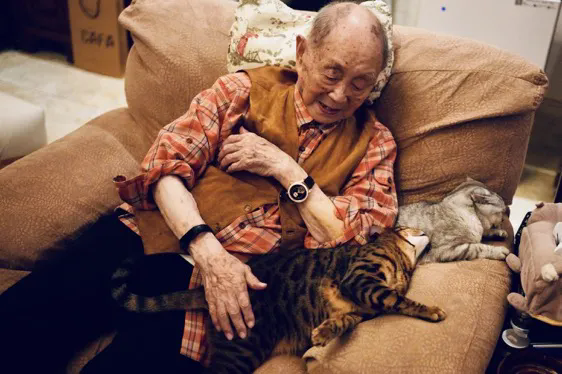
Huang Yongyu in His Late Years (Photo by Bimuyu)
About the Artist
Born in 1924 in Fenghuang County, Hunan Province, Huang Yongyu was one of the most groundbreaking and multi-talented modern Chinese artists. He is widely known for his ink-wash paintings, woodblock prints, and literary works. Growing from an impoverished background, he had worked in various professions and wandered to different places since the age of thirteen to make a living during the tumultuous wartimes.
Huang started creating woodblock prints at the age of sixteen, and he earned his first income when attending the Jimei School in Fujian Province. In 1948, he moved to Hong Kong and quickly gained local recognition after his first solo exhibition. He then worked as an arts editor alongside Jin Yong for Ta Kung Pao. He moved to Beijing in 1953 after being referred by his uncle, the famed writer Shen Congwen, as the youngest professor at the Central Academy of Fine Arts.
Huang Yongyu gained initial fame through his print series Ashima (1957) and Spring Tide (1961) for its strong folk influences and bold style, but he never stopped pushing the boundaries of his practice throughout his career. Whilst living alongside other emerging artists in Chinese paintings, such as Li Kuchan and Li Keran, Huang started exploring and experimenting with ink and oil paintings. He started to create many colored ink paintings in his seventies, with his subjects ranging from landscapes, flowers, figures, caricatures, and birds, often accompanied by his unique inscriptions with historical allusions and playful messages. He created the first zodiac stamp for the Year of the Monkey in 1980, which later became the most sought-after postal stamps in China. He spent his final years in the suburbs of Beijing, naming his self-designed residence and studio the Ten Thousand Lotus Hall—a reference to his lifelong love for lotus flowers.
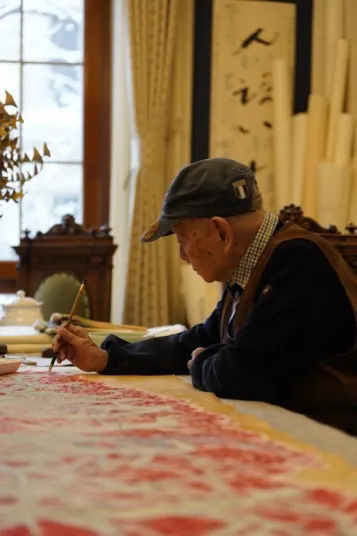
Huang Yongyu in His Late Years (Photo by Bimuyu)Huang won numerous awards both within the country and internationally. In addition to winning a national award for his “Honorable Achievements in the Arts” in 2006, Huang is also the first Chinese artist to win the Olympic Art Prize, awarded by the International Olympic Committee in 2008.




























